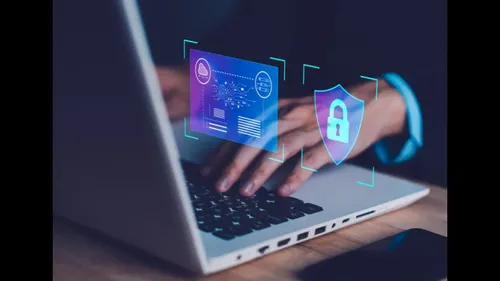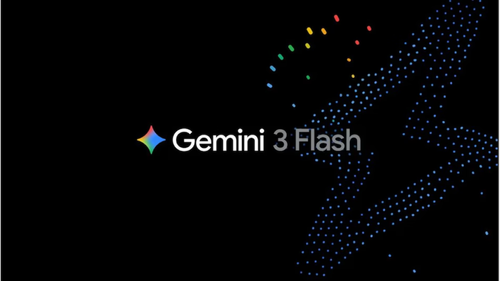Ad
Articles
The Rise of AI-Driven Phishing: Safeguarding Your Gmail Account

In an alarming development for internet security, a sophisticated AI-driven cyber-attack is targeting Gmail’s vast user base, which includes approximately 2.5 billion account holders. This attack leverages advanced technology to craft realistic phishing scams, specifically designed to manipulate users into divulging sensitive information. Recent reports from cybersecurity experts highlight the methods employed by these hackers, providing insights into how users can protect themselves against such threats.
The Nature of the Attack
The cyber-attack primarily involves hackers posing as Google Support representatives, utilizing AI to simulate authentic interactions. The attack begins with users receiving notifications about unusual account activity, a tactic commonly used in phishing schemes. These notifications often prompt individuals to verify their accounts or approve recovery attempts, which are calculated strategies to gain access to user credentials.
Sam Mitrovic, a Microsoft solutions consultant, detailed his experience with this specific scam in a blog post, shedding light on the sophisticated techniques employed by the attackers. Mitrovic received an initial notification alerting him to a recovery attempt on his Gmail account. Understanding that this could be a phishing attempt, he chose to ignore it. However, this was only the beginning.
The Phishing Strategy
Following the initial notification, Mitrovic received a second alert, this time indicating that he had missed a call from “Google Sydney.” Despite his skepticism, he again chose to ignore the alert. However, the attackers persisted. A week later, the same notifications reappeared, compelling Mitrovic to eventually pick up the phone call.
On the call, the individual on the other end claimed to be from Google Support, informing Mitrovic that suspicious activity had been detected on his Gmail account. Alarmingly, the caller asserted that the attacker had successfully downloaded his account data. The number displayed on his caller ID appeared legitimate, resembling one associated with a Google business page. This clever tactic added a layer of credibility to the scam, making it difficult for the average user to discern its authenticity.
The AI Element

What ultimately set this attack apart was the use of AI-generated voice technology. Mitrovic soon realized that the voice on the call was artificially generated. The conversation felt scripted and unnatural, characterized by repetitive phrases, such as “Hello,” spoken at regular intervals. This raised red flags for Mitrovic, as the AI voice lacked the nuances and spontaneity of genuine human interaction.
The attackers’ strategy was likely designed to create a sense of urgency and panic in the user, prompting them to act quickly without taking the time to verify the caller’s identity. This tactic is especially effective in the realm of cybersecurity, where fear can cloud judgment and lead to rash decisions.
Potential Consequences
Had Mitrovic not recognized the signs of the AI scam, the attackers might have moved forward with capturing his user credentials. The phishing attempt would have ideally progressed to a stage where the hackers could have gained access to his account. If successful, they could have employed session cookie malware to bypass two-factor authentication—a security feature that many users believe offers robust protection against unauthorized access.
The implications of such breaches can be severe. Hackers gaining access to personal Gmail accounts can lead to identity theft, financial loss, and the exposure of sensitive personal information. In the case of corporate accounts, this could result in significant breaches of confidential data, putting both individual and organizational security at risk.
The Growing Threat of AI in Cybercrime
The use of AI in cyber-attacks marks a troubling trend in the landscape of cybersecurity. As artificial intelligence technology advances, so too do the methods employed by cybercriminals. AI can be harnessed to create increasingly convincing phishing scams, automate attacks, and analyze vast amounts of data to identify potential targets. This evolving threat landscape poses challenges for cybersecurity professionals and individual users alike.
The combination of AI-generated voices and authentic-looking notifications represents a new frontier in phishing attacks. Users may find it increasingly difficult to distinguish between legitimate communications from trusted entities and fraudulent attempts to extract sensitive information.
How to Protect Yourself

Given the sophistication of these AI-driven scams, users must adopt proactive measures to safeguard their accounts. Here are some strategies to enhance personal cybersecurity:
- Enable Two-Factor Authentication (2FA): While attackers may attempt to bypass 2FA, it remains one of the most effective methods to secure accounts. Enabling 2FA adds a layer of verification, requiring users to provide a second form of identification beyond their password.
- Be Skeptical of Unexpected Notifications: If you receive unexpected notifications, especially regarding account recovery or unusual activity, approach them with caution. Verify the source of the notification directly through official channels rather than using links or contact information provided in the notification.
- Do Not Engage with Unverified Calls: If you receive a call from someone claiming to be from a trusted organization, do not engage. Instead, hang up and contact the organization directly using official contact information to verify the legitimacy of the call.
- Monitor Your Accounts Regularly: Regularly check your account activity and settings to ensure that no unauthorized changes have been made. If you notice anything suspicious, take immediate action to secure your account.
- Educate Yourself and Others: Stay informed about the latest cybersecurity threats and share this information with friends and family. The more people are aware of these tactics, the harder it becomes for cybercriminals to succeed.
Global Cybersecurity Legislation: A Comparative Overview
- India: Information Technology Act, 2000
Overview: The Information Technology Act, of 2000 provides a legal framework for electronic governance, cybersecurity, and the protection of sensitive personal data. It addresses issues such as hacking, data theft, and cybercrime.
- United States: Cybersecurity Information Sharing Act (CISA)
Overview: Enacted in 2015, CISA encourages the sharing of cybersecurity threat information between government and private sector entities. It aims to improve national security by enhancing collaboration on cybersecurity threats.
- European Union: General Data Protection Regulation (GDPR)
Overview: Implemented in 2018, GDPR establishes strict guidelines for the collection and processing of personal information within the EU. It includes provisions for data protection, user consent, and breaches.
- United Kingdom: Data Protection Act 2018
Overview: This act updates data protection laws in the UK and aligns with GDPR. It regulates the processing of personal data and includes provisions for the protection of individual privacy rights.
- Australia: Privacy Act 1988
Overview: The Privacy Act governs the handling of personal information by Australian government agencies and some private sector organizations. It establishes principles for the collection, use, and disclosure of personal data.
- Canada: Personal Information Protection and Electronic Documents Act (PIPEDA)
Overview: PIPEDA sets out the rules for how private-sector organizations collect, use, and disclose personal information in the course of commercial activities. It includes provisions for data protection and user consent.
- Singapore: Personal Data Protection Act (PDPA)
Overview: The PDPA regulates the collection, use, and disclosure of personal data by organizations in Singapore. It aims to protect individual privacy while promoting the use of data for business and innovation.
- Japan: Act on the Protection of Personal Information (APPI)
Overview: The APPI regulates the handling of personal information in Japan. It includes requirements for obtaining consent, data breach notifications, and the rights of individuals regarding their data.
- Brazil: General Data Protection Law (LGPD)
Overview: Enacted in 2020, LGPD establishes comprehensive regulations for data protection in Brazil, similar to GDPR. It covers the processing of personal data and the rights of individuals.
- South Africa: Protection of Personal Information Act (POPIA)
Overview: POPIA aims to protect personal information processed by public and private bodies. It provides rights to individuals regarding their data and obligations for responsible data handling by organizations.
The Role of Companies in Combatting Cybercrime

Tech companies like Google, Microsoft, and others have a crucial role in combating cybercrime and protecting users. They must continue to invest in advanced security measures and develop technologies that can detect and mitigate these threats in real-time. Furthermore, educating users about potential risks and how to identify phishing attempts is essential for creating a safer online environment.
Enhancements to Security Protocols
Companies should also consider enhancing their security protocols to provide users with better tools to verify the authenticity of communications. For instance, implementing clearer notifications and alerts regarding account activity can help users distinguish between legitimate alerts and scams.
Conclusion
As cyber criminals increasingly leverage AI technologies to enhance their attacks, users must remain vigilant and proactive in protecting their online accounts. The recent case reported by Sam Mitrovic serves as a stark reminder of the potential risks associated with AI-driven phishing scams.
By adopting robust security measures, remaining skeptical of unexpected communications, and staying informed about the latest threats, individuals can significantly reduce their risk of falling victim to these sophisticated scams. In a world where digital interactions are pervasive, cultivating a culture of cybersecurity awareness is essential for safeguarding personal and organizational data against evolving threats.
Follow Us:
Ad
Recent News

Google Unveils Gemini 3 Flash: Faster AI That Outshines Pro Model
18-Dec-2025 09:55 AM

Motorola Edge 70 Launches in India: Slim Design, Strong Battery
15-Dec-2025 07:14 AM

Jio’s Happy New Year 2026 Plans: Get Unlimited 5G and more
15-Dec-2025 06:38 AM

Amazon Bets Big on India’s AI Boom with New 2030 Roadmap
12-Dec-2025 12:23 PM

Google AI Plus Plan Launched in India: Affordable Access to Advanced AI Tools
10-Dec-2025 09:11 AM
Reviews & Guides
View All

Nothing Phone 3a Community Edition First Impressions: A Fresh Take on Budget Smartphones

Realme P4x 5G Review: Budget-Friendly Beast with Epic Battery Life

Sony BRAVIA 7 Mini LED K-65XR70 vs. Haier Mini LED H65M95EUX

Samsung QN90F (65QN90FAU) Review: The King of Bright-Room Viewing

Why doesn’t Apple reveal the iPhone battery in advertisements?

Donald Trump Watch Collection: Timeless Luxury on the Wrist

Best 5 Litre Water Heaters in India 2025: Top Latest Models for Quick Hot Water

Top 10 camera lenses you should Own in 2025
Ad
Latest Mobiles In India
Ad
Ad












